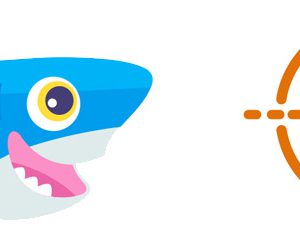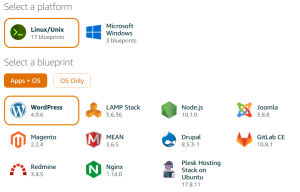Cloud Confusing
Explaining hosting, AWS, Wordpress, static sites, and all manner of cloud solutions.
AWS Lightsail vs Digital Ocean: Cloud VPS Shootout

If you are in the market for an affordable VPS, there is a good chance you are considering Amazon Web Services’s Lightsail and a Digital Ocean droplet. Or perhaps you are already a custom of one and want to learn about other options. Either way, this is a full comparison of the two hosting services that might help you choose between them.
Please note, this article does contain affiliate codes. If you click one and sign up, it supports this site.
Digital Ocean sign-up, starting at $5.
Where Are They Located?
Generally you’ll want to pick the region that is closest to your physical location, but you might also want to choose one that is closest to your customers, depending on the application of the server.

Amazon Lightsail: Instances are located in 13 regions and between 1 and 6 availability zones per region. An AWS availability zone is like a sub-region: it’s a way to have instances in the same region but to still maintain fault tolerance, as if they were in separate locations. Different availability zones might be at separate physical locations within the region.
Digital Ocean: DO has datacenters in 8 locations and 12 availability zones. Some locations, like New York have up to 3 availability zones (2 are available), while others, like Bangalore, only have zone.
Price Range
AWS LightSail: Prices range from $3.50 a month to $160 a month.
Digital Ocean: Prices range from $5 to $960 a month.
Instance Sizes and Spaces
AWS Lightsail:
- Memory: 512MB to 32GB
- Virtual CPUs: 1 to 8
- Storage: 20GB SSD to 640GB
- Transfer: 1TB to 7TB
Digital Ocean:
- Memory: 1GB to 192GB
- Virtual CPUs: 1 to 32
- Storage: 25GB SSD to 3.75TB
- Transfer: 1TB to 12TB
Just based on specs, Digital Ocean offers more selection than Lightsail does. About 40% of their droplets (that they call VPS instances) are special order ones, because they are especially expensive or are “CPU optimized.” You need a verified account in order to spin up one of these.
Operating Systems
AWS Lightsail: You can choose between Linux/Unix and Windows.
- Linux: Amazon Linux, Ubuntu 16.04 LTS, Debian 8.7, FreeBSD 11.1, openSUSE 42.2, CentOS 7 1805-1
- Windows: Server 2016, Server 2012 R2
Digital Ocean: A selection of popular Linux/Unix distributions.
- Ubuntu 18.04, 16.04, or 14.04 (32- or 64-bit)
- FreeBSD 11.2 back to 10.3
- Fedora 28 x64 and 27 x64
- Debian 9.5 x64, 8.10 x64, 8.10 x32
- CentOS 7.5 x64, 6.9 x64, 6.9 x32
Significantly, Digital Ocean also supports custom images and container distributions. Supported containers are CoreOS, Fedora Atomic, and RancherOS.
One-Click Applications
AWS LightSail:
- Linux: WordPress, LAMP stack, Node.js, Joomla, Magento, MEAN stack, Drupal, GitLab CE, Redmine, Nginx, Plesk Hosting on Ubuntu
- Windows: SQL Server 2016 Express
Digital Ocean (all on Ubuntu 18.04): Discourse, Django, Docker, Dokku, Ghost, GitLab, LAMP stack, LEMP stack, MongoDB, MySQL, Node.js, PhpMyAdmin, Ruby-on-Rails, WordPress.
Tools
AWS Lightsail:
- Free DNS management
- Free public static IP
- Web-based SSH
- API and CLI offering everything you can do through the website
- VPC peering
- Block storage
Digital Ocean:
- Free DNS management
- Static IP (Called a “floating IP”)
- Block storage (An independent storage volume that you can move between instances in an availability zone)
- VPS to VPS networking
- Cloud-init instance customization
- Monitoring
- Alerts
DNS management through Digital Ocean is more robust. Lightsail’s is very simplistic and if you want to do anything non-standard or with any customization (past, say, adding a CNAME) you’ll need to move to Amazon’s Route 53.
Backups
AWS Lightsail: You can take and store snapshots of your instances. These seem to be free. It takes some time to create a new snapshot (over 10 minutes).
Snapshots cannot be automated, so you couldn’t easily take a nightly backup.
Digital Ocean: Weekly backups are available but they will cost an additional $1/month.
Resizing and Downscaling Instances
AWS Lightsail: This is doable, but not with a single click. You need to take a snapshot of your instance and then move that snapshot to your new (larger or smaller) instance and then configure your DNS.
Digital Ocean: This is doable and very easy. DO offers a Resize tab in the control panel which lets you change a powered down instance. You can change the CPU and RAM, a change which can be reversed, or you can upgrade CPU, RAM, and Storage. The latter cannot be reversed.
Monitoring
AWS Lightsail: Lightsail has a monitoring dashboard.
Digital Ocean: DO offers an optional monitoring dashboard as well as curl commands for keeping track of your instances. You can also set alert conditions through their monitoring tool.
Load Balancing and Firewalls
AWS Lightsail: You can add load balancers for $18/month. There are firewall settings available as well, if you want to close down ports or limit traffic to them.
Digital Ocean: Both LB and firewalls are available. Load balancers start at $10/month.
IPv6
AWS Lightsail: No support, still using IPv4.
Digital Ocean: Yes, IPv6 is supported
Support
* coming soon *
Both of these serves are generally free of service aside from up-time and product related questions. You can pay for support from AWS, starting at $29/month.
Quirks and Downsides
AWS Lightsail:
- Can’t rename DNS zones or instances
- Can’t move instances between zones
- Accounts are limited to 20 instances, 5 static IPs, 3 DNS zones, 20TB of attached block storage, and 5 load balancers
Closing Thoughts
This is a lot to take in and I’ve decided to keep my commentary limited (for now). Long story short, the main strength of Lightsail is that it’s integrated into your AWS account. This means unified billing, unified support, and other conveniences like that. Amazon also offers a $3.50/month plan, free backups, and one-month free trials which mean getting started with Lightsail is incredibly cheap and easy.
All that noted, if you are starting off fresh with a VPS then Digital Ocean is better on paper in almost every way. They offer better specs and more options, plus there is IPv6, which Amazon has yet to bring to Lightsail. The caveat to this is that Digital Ocean is generally a more technical tool that is more demanding on the user (at least as far as the web console in concerned) so people new to the space should keep in mind that Lightsail’s web UI is more beginner-friendly.
I’ll be updating this article as frequently as possible in the future.
Sal October 6th, 2018
Posted In: AWS
Tags: Digital Ocean, Lightsail


